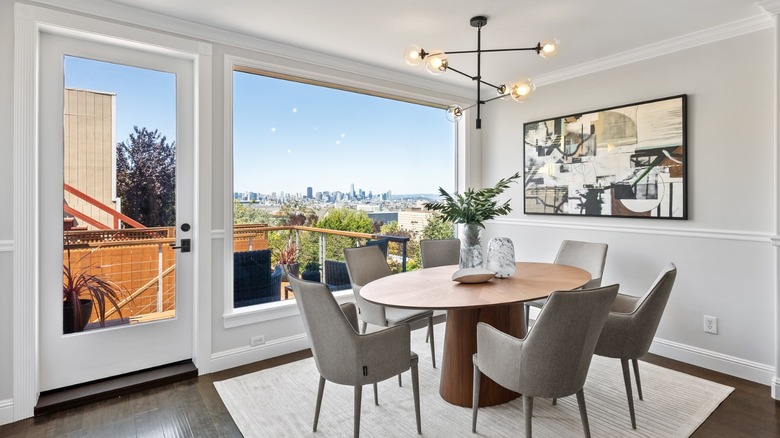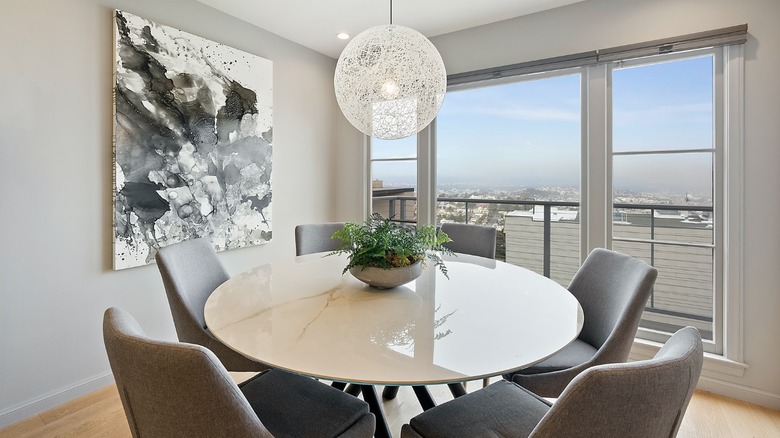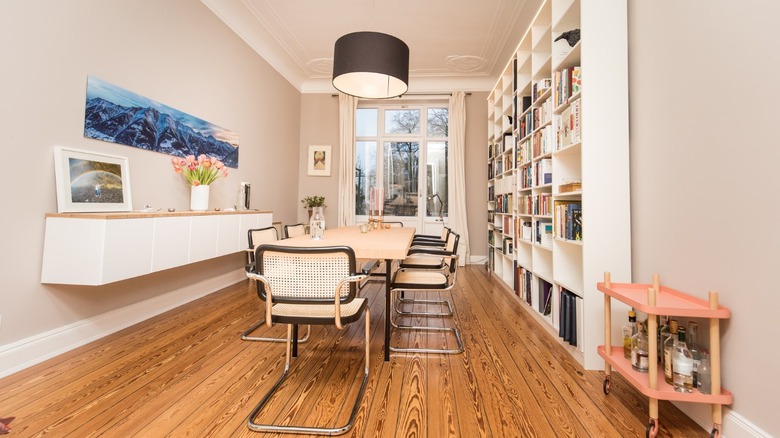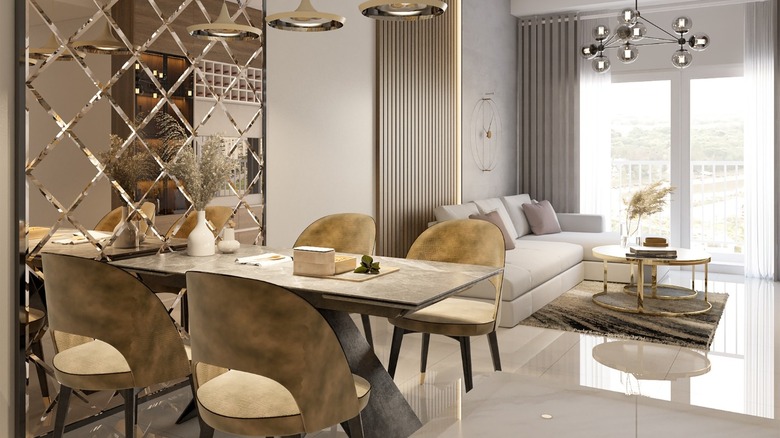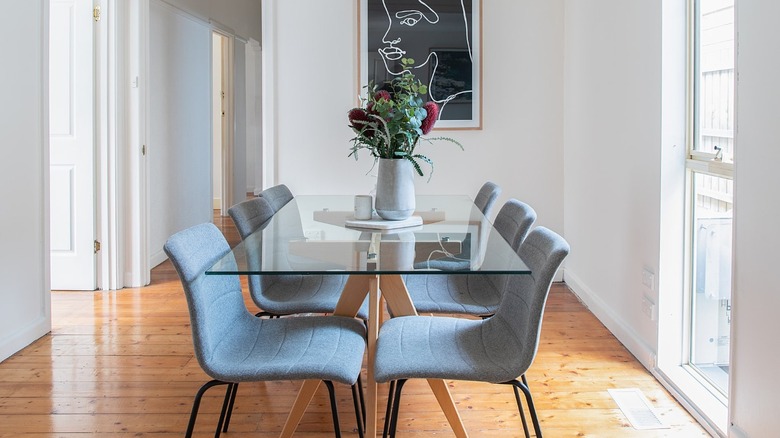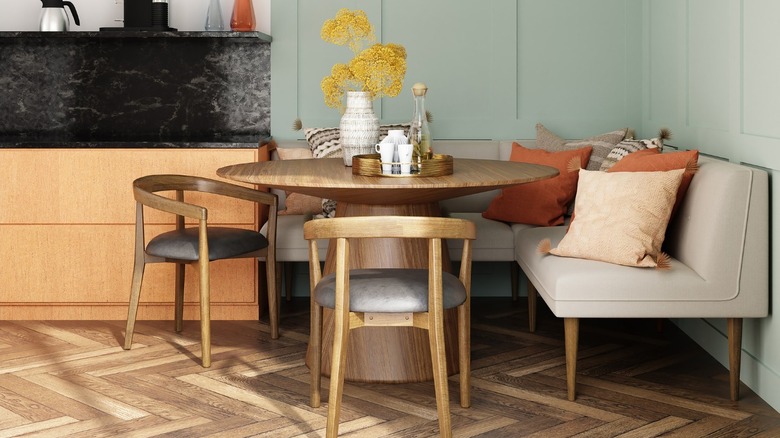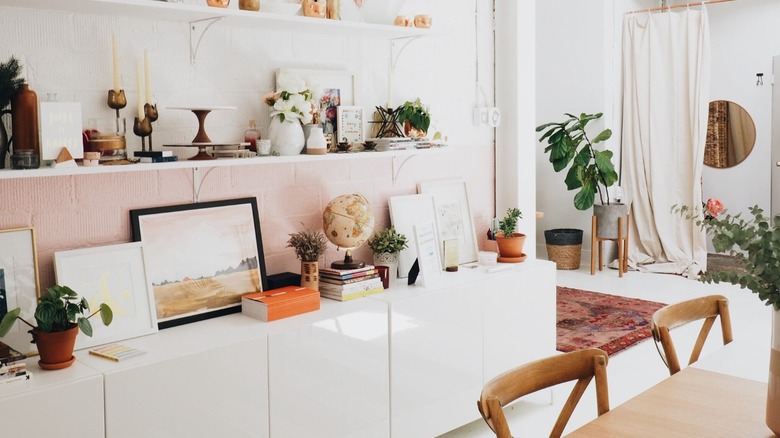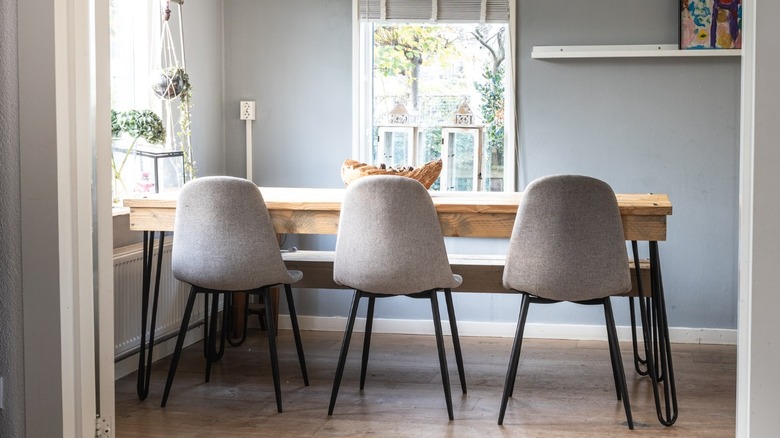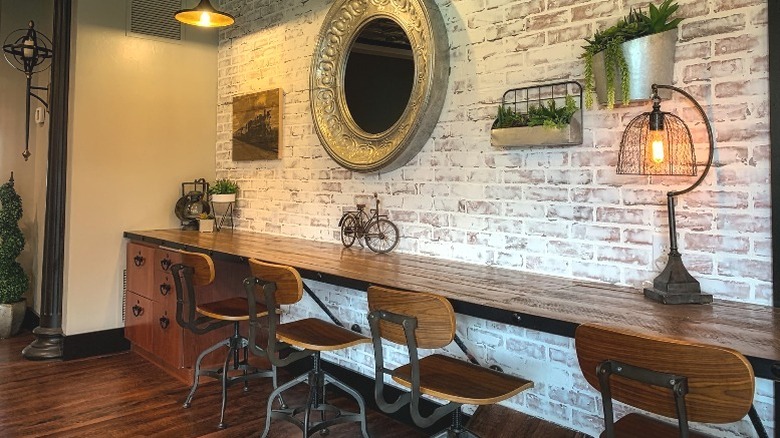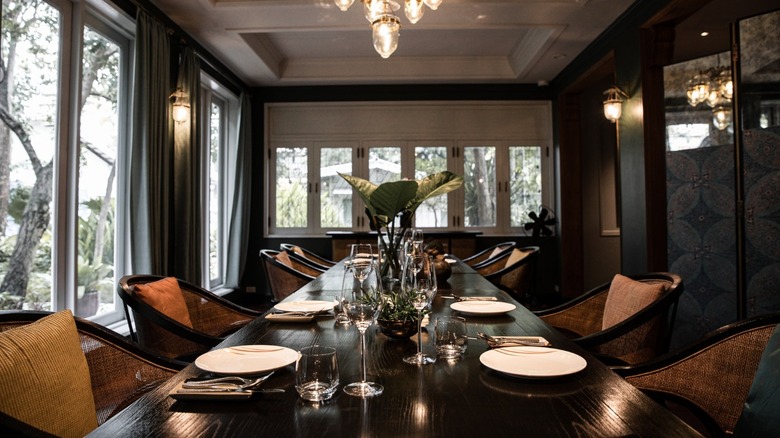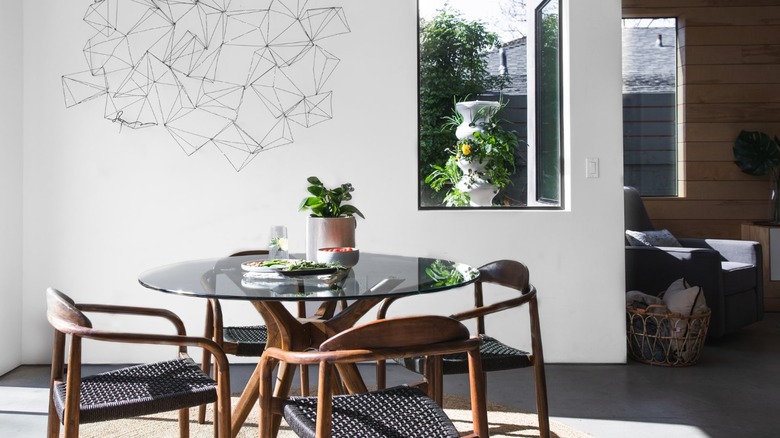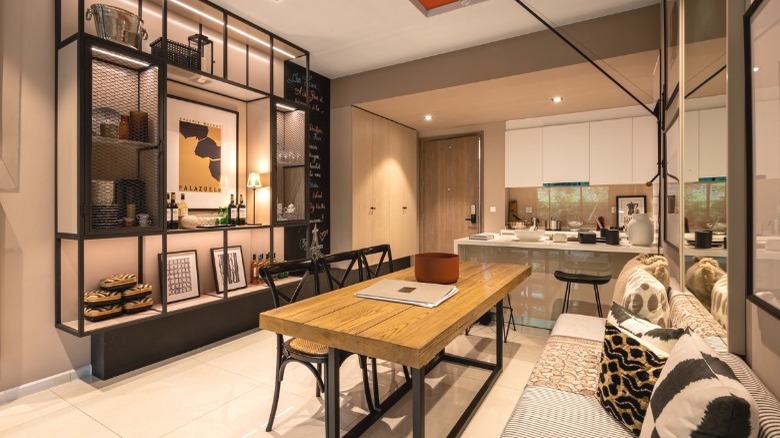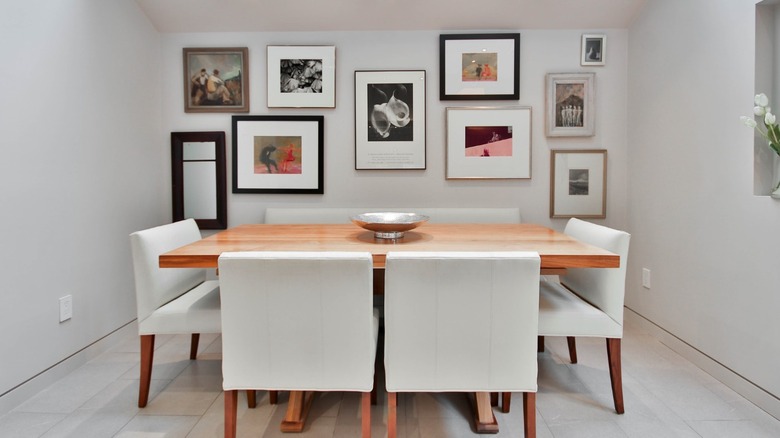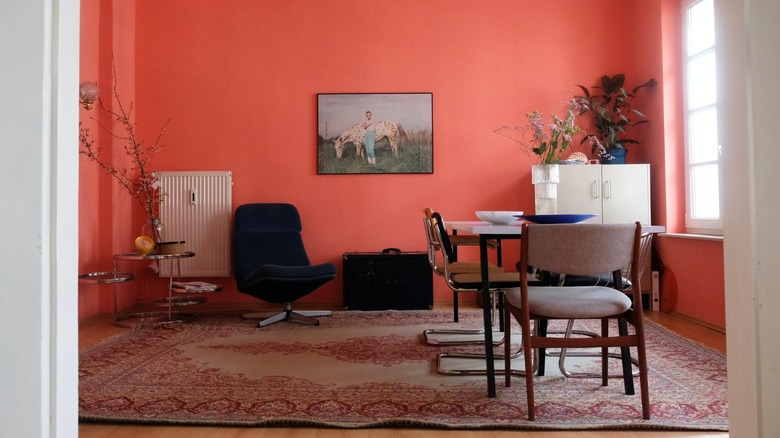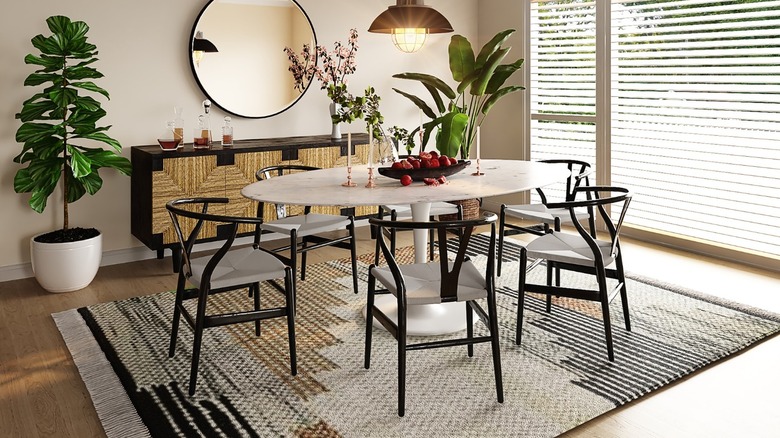15 Savvy Ideas For Maximizing Your Small Dining Room
A dining room is a luxury. It's a place to gather with the sole purpose of being absorbed — in a meal, conversation, and company. Spaces at home rarely feel this geared toward conviviality and relaxation; one could point to the family room, but the downtime there is often passive — we are being entertained, not entertaining. Even when alone, eating in the dining room seems intentional, an act of defiance against convenience and speed.
According to The Washington Post, this formal room is mainly little used and neglected in fast-paced schedules. However, we likely found ourselves needing to fit some extra activities and hours into the same footprint we already occupied once we slow down and live more in the present.
Designer Max Sinsteden relayed that setting a pretty table and sharing dinner with his husband at the end of the day was a source of joy during a challenging time. Interior designer Marika Meyer told The Washington Post we should rethink the concept of the dining room to make it complementary and adaptable to the way we live now — crafting a metaphor with the little black dress, an ever-reliable piece that can be both fancy and a frolic. The space doesn't require much square footage to be in proportion, comfortable, and gorgeous. We share 15 ways to outfit a small dining room that will make you happy you stayed in.
1. A round table in a square room
Rectangular dining tables mimic the usual room shape, creating an easy flow and an aesthetically pleasing look. However, for smaller or square rooms, round tables are an excellent spatial choice; they encourage conversation and make it less awkward to serve odd numbers.
2. Cookbook nook
Double or triple your space with multiple functions. This dining room shares square footage with a library and cocktail bar and would be an ideal spot for a home office. Though the room is narrow, a rectangular table, long, wall-mounted storage, and floor-to-ceiling bookshelves make the most of the available footprint.
3. Add space with mirrors
Amplify light and space with mirrors. In this case, a table pushed against the wall-mounted mirror seems twice as long; candlelight and its reflection will create extra ambiance in the evenings. Interesting frames, etched designs, and vintage options can add even more interest to one of the oldest decorating tricks around.
4. Be transparent
Glass and acrylic furniture visually disappear; thus, they're a great choice in undersized rooms, as opposed to dark and heavy pieces, which can contribute to a cramped impression. If there are small children or tall pets in the household, consider a round or oval table for their absence of sharp corners.
5. Build in a banquette
Banquettes are not just a trending way to introduce color and pattern into the dining area; they're functional and comfortable, too. Because they rest against the wall, they don't require space to push chairs in and out while getting situated at the table. In addition, upholstered cushions and accent pillows offer comfortable, prolonged seating.
6. Keep a low profile
Low cabinets help keep a room light and airy while floating shelves above can add storage and a location to display favorite objects. In this example, the pieces assimilate into the background wall due to a similar color; this makes the space feel more expansive than high contrast pieces would.
7. Benched players
In a small-scale footprint, low chairs and benches maintain the sightline through a space, making it feel larger. The fact that some benches tuck entirely underneath the table is a remarkable benefit in tiny rooms. In contrast to single chairs, one accommodates multiple diners and free-form seating.
8. Go with the flow
Working within an awkward layout can be a challenge. Think outside the box a bit — two small seating areas instead of one long table might be a better use of space. Here, a bar table against an entry wall serves as a casual and functional dining spot that still allows for traffic flow.
9. Be indulgent
A room's limitations can't always be masked — sometimes, it's better to play them up. For example, a table with extra length can pleasantly occupy an elongated room. Dark and moody walls pair well with rich wood and luxurious seating, while an abundance of natural light in the space will keep diners from feeling hemmed in.
10. Come up short
In a dining room with a tiny footprint, chairs with low backs maintain a clean, uncluttered impression and help to create the illusion of more space. Those that barely reach above the table top are ideal. Additionally, they tend to appear more modern and casual — a consideration if that's the preferred style.
11. Go high
A high wall unit with narrow depth optimizes square footage in tight quarters, maximizing display opportunities and storage by occupying what would typically be empty space. The large piece above houses wine service, a mini-bar, dinnerware, and more, and it's a place to add the artwork to the décor — yet everything is neatly corraled.
12. Blend in
Low contrast engenders the feeling of space and calm as it keeps the eye roaming within a given area — pieces that abruptly arrest the eye's movement can make a room seem cut-up or overwhelmed by furniture. For example, the light upholstered chairs disappear in this room while the gallery wall receives all the attention, adding needed interest.
13. Maximize with multiple use
Creating flexible and dual-purpose spaces is the best way to add square footage that doesn't involve renovation. Often, these rooms have an unplanned richness from a particular juxtaposition of functions or furniture. It boils down to the fact that they are made around the household's unique needs and personalities.
14. A tiny table for big flavors
There is an assumption that dining tables need to be large, and if you entertain crowds often, that might be true. However, one only needs enough surface area for frequent diners to enjoy meals comfortably; models that expand with leaves are convenient. Encourage friends and loved ones to linger with cozy seating.
15. Delicate silhouettes
You can go big on style for little spaces while maintaining proportion with delicate silhouettes. For example, the graphic wishbone chairs and simple marble pedestal table above provide a ton of wow factor without overwhelming the area. In addition, a neutral and limited color palette creates cohesion that allows a room to feel spacious.
